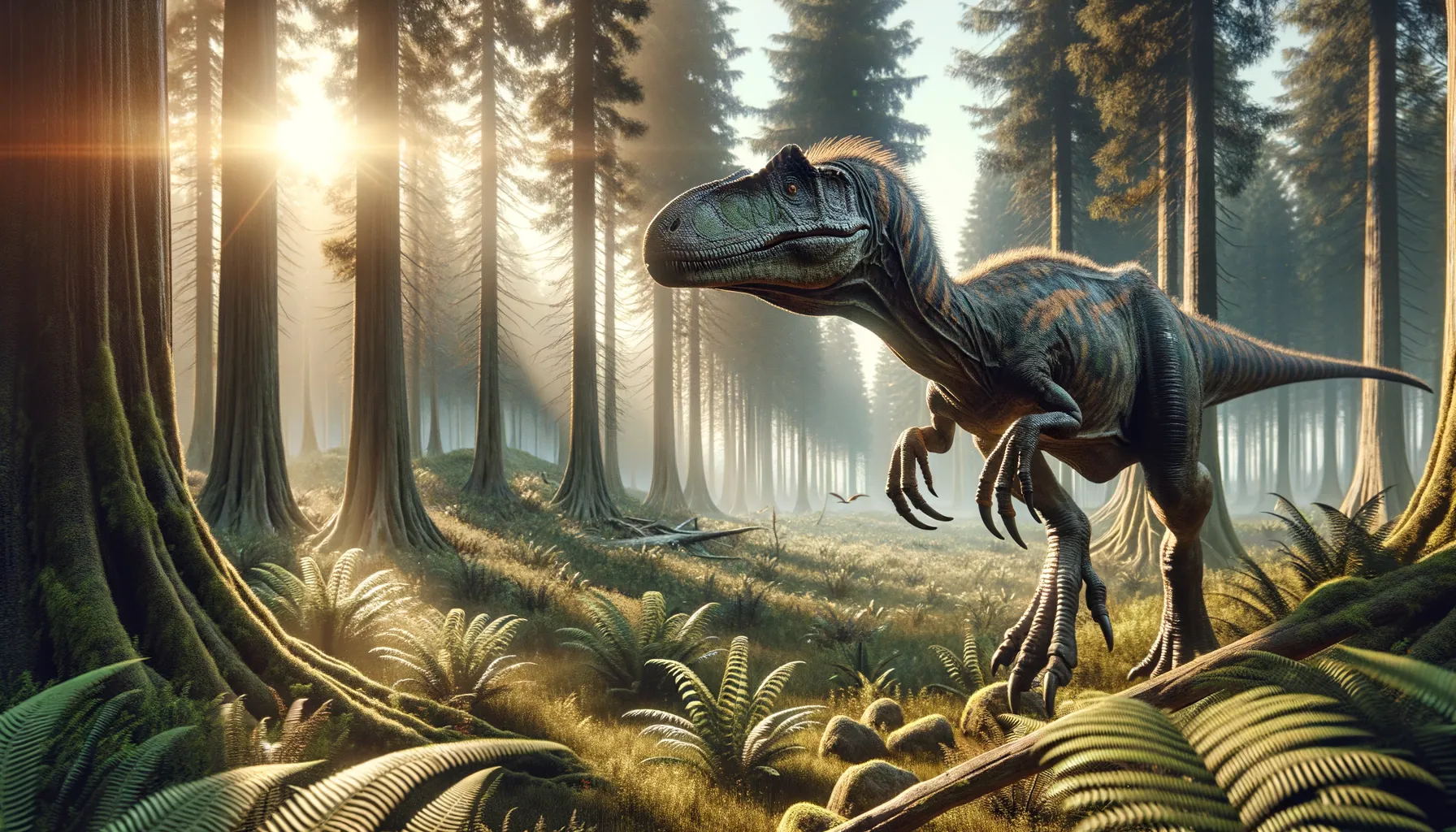
Qiupanykus
Swift and specialized, a Cretaceous enigma!
Period
Cretaceous
Length
Around 1.5 meters in length.
Height
Estimated at about 1 meter tall.
Weight
Approximately 40 kilograms.
Qiupanykus is an intriguing dinosaur species that lived during the Late Cretaceous period. This small theropod is particularly notable for its distinctive hands, which suggest specialized feeding behavior. With a bird-like appearance, Qiupanykus offers valuable insight into the evolution and diversity of dinosaurs. Its fossil remains have provided paleontologists with clues about the ecological adaptations of theropods in their respective environments.
Diet
Qiupanykus likely had an omnivorous diet. It is suggested to have fed on both small animals and plant material. Its unique claws might have been used to exploit specific food sources.
Hunting
The hunting behavior of Qiupanykus might have involved swift pursuits of small prey. Its speed and agility would have been assets in catching fast-moving animals. Alternatively, it could have used its specialized claws to access food otherwise unavailable.
Environmental challenges
Qiupanykus lived during a time of significant climatic fluctuations. This period experienced shifts that affected vegetation and available resources. The ability to exploit diverse food sources would have been advantageous for survival. Adaptability in diet and behavior likely contributed to coping with these environmental pertubations.
Speed
Likely fast, adapted for swift movements.
Lifespan
Unknown, but typical for small theropods.
First discovery
Found in Qiupa, Henan Province, China.
Fun Facts
- Qiupanykus was discovered in China, a country known for its rich dinosaur fossil sites.
- This dinosaur is believed to have lived during the Late Cretaceous period, over 70 million years ago.
- Qiupanykus had a specialized diet, which may have included hard-shelled eggs, indicated by its robust claws.
- It belongs to a group of theropod dinosaurs known as Alvarezsauridae, which are characterized by their small size and unique adaptations.
- Qiupanykus is considered to have been relatively small, measuring only a few feet in length.
- The name "Qiupanykus" is derived from a combination of the location of its discovery and Greek, meaning "swift claw."
- Its fossils provide valuable insights into the diversity and ecological roles of dinosaurs in prehistoric ecosystems.
Growth and Development
Qiupanykus, like many theropods, underwent stages of rapid growth. Juvenile individuals would have experienced high growth rates to reach maturity quickly. This swift development was possibly coupled with changes in diet as they aged. The life stages could have involved both physical changes and alterations in social behavior.
Habitat
Its habitat included a diverse landscape with varied plant life. Forested areas and nearby water sources could have been part of its living environment. This environment would have provided the necessary cover and resources for survival. The diversity of its habitat likely supported a wide array of contemporaneous species.
Interaction with other species
Qiupanykus coexisted with numerous other dinosaur species. Interactions might have included competition for food and territory. It could have also experienced predatory threats from larger theropods. Symbiotic or mutualistic relationships with other species can't be ruled out entirely.
Natural lifespan
The natural lifespan of Qiupanykus remains speculative without precise fossil evidence.
Reproduction
Reproductive strategies of Qiupanykus align with typical theropod behaviors. It likely laid eggs, possibly in nests similar to those of modern birds. Parental care is a potential behavior inferred from its lineage. Nesting sites might have been carefully chosen to ensure the survival of offspring.
Social behaviour
Social behavior in Qiupanykus is largely speculative. Evidence suggests the possibility of group living or at least temporary aggregations. Communication could have been through visual or auditory signals, similar to modern birds. Its small size might imply a social structure to offset predation risks.
Fossil locations
The primary fossil evidence has been discovered in Qiupa, China. These findings were pivotal in understanding the species’ morphology. The discovery location offers insight into the habitat preferences of Qiupanykus. Further exploration in the region might yield additional fossils to shed light on its distribution.
